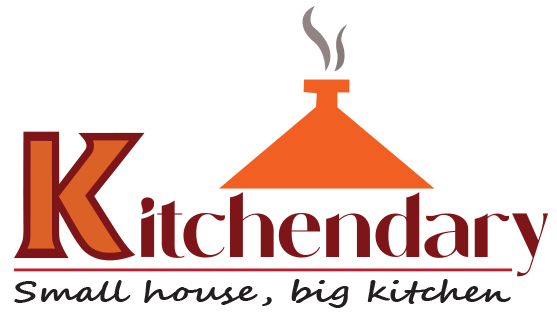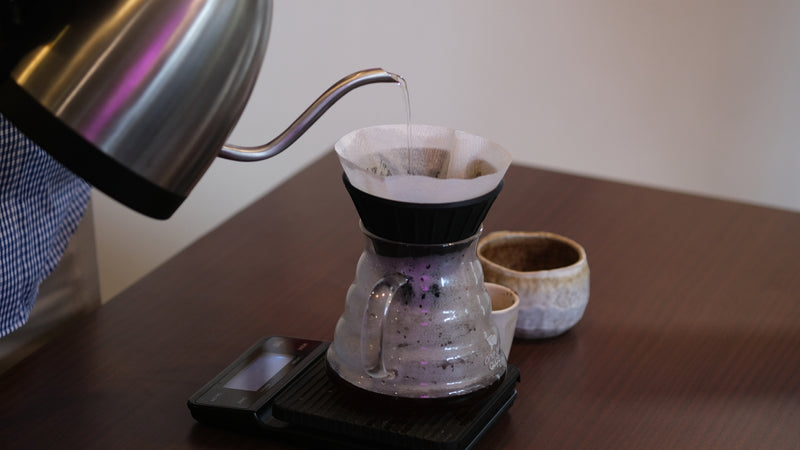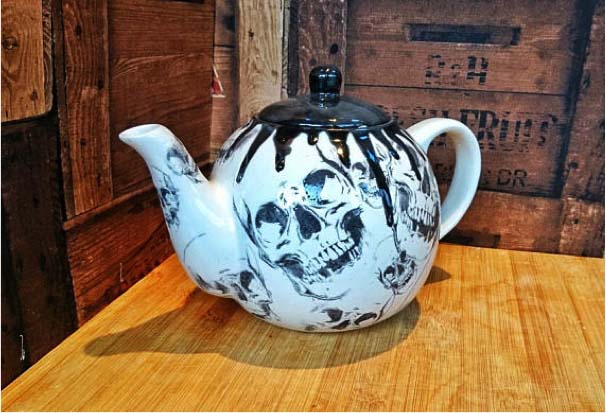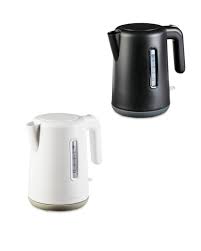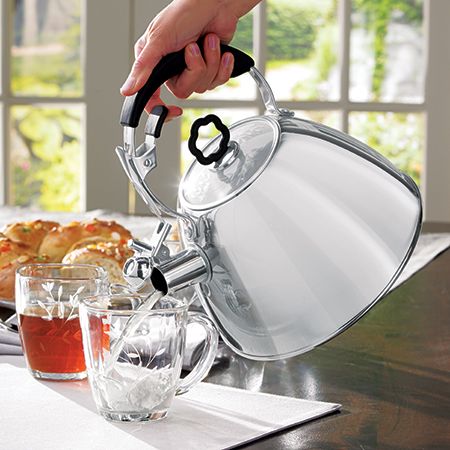To make coffee in a kettle, first boil water. Then, add ground coffee and let it steep before straining.
Coffee enthusiasts often seek convenient and simple methods to brew a fresh cup of coffee. Making coffee in a kettle is a popular technique for those who prefer a hassle-free brewing process. This method enables them to enjoy a rich and flavorful cup of coffee with minimal equipment and effort.
Whether it’s for camping trips, office settings, or home use, mastering the art of brewing coffee in a kettle allows individuals to savor a freshly brewed cup at their convenience. By following a few simple steps, anyone can make a delicious cup of coffee using just a kettle and some ground coffee. This article will guide you through the process, providing valuable tips and insights to enhance your coffee brewing experience.
Choosing The Right Kettle For Coffee Brewing
When it comes to making coffee in a kettle, choosing the right kettle is crucial for a delicious and consistent brew. Whether you prefer stovetop or electric, the kettle you use plays a significant role in the quality of the coffee you’ll enjoy. Let’s explore the factors and features to consider when selecting the perfect kettle for your coffee brewing needs.
Stovetop Vs Electric Kettles
Stovetop kettles have been a traditional choice for coffee lovers due to their classic design and ability to reach higher temperatures. They are versatile and can be used on any heat source, making them a popular option for camping and outdoor brewing. On the other hand, electric kettles are known for their convenience and precision. They often come with sophisticated features such as temperature control settings, rapid boiling, and keep-warm functions.
Factors To Consider
- Material: Decide whether you prefer stainless steel, ceramic, or glass construction based on your brewing preferences.
- Capacity: Consider the amount of coffee you usually brew at once to ensure the kettle’s capacity meets your needs.
- Heating Speed: Evaluate the efficiency of the kettle in terms of boiling speed, especially if you appreciate a quick and hassle-free brewing process.
- Temperature Control Options: Look for kettles with precise temperature settings to achieve optimal extraction for various coffee types and brewing methods.
- Size and Weight: Consider the portability and storage space of the kettle, especially if you often travel with your brewing equipment.
- Additional Features: Assess the availability of features such as a gooseneck spout for controlled pouring and a built-in timer for accurate brewing.
Temperature Control Options
For coffee enthusiasts who prioritize precision and consistency, temperature control is a critical feature in a kettle. Look for kettles that offer specific temperature settings, allowing you to achieve the ideal water temperature for various coffee brewing methods. The ability to adjust the temperature ensures that you can extract the nuanced flavors and aromas present in different coffee beans. A kettle with temperature control options empowers you to experiment with precise brewing parameters and discover your preferred coffee profiles.
Selecting The Best Coffee Beans For Kettle Brewing
When making coffee in a kettle, selecting the best coffee beans is crucial for achieving a delicious and flavorful brew. From understanding different bean varieties to knowing the roast levels and flavor profiles, every aspect plays a significant role in the outcome of your coffee. Let’s explore how to choose the best coffee beans for kettle brewing.
Understanding Bean Varieties
There are various types of coffee beans available, each with its unique characteristics and flavors. Two of the most popular bean varieties are Arabica and Robusta. Understanding the differences between these two can help you make an informed decision when selecting the best beans for your kettle-brewed coffee.
Arabica Vs Robusta
Arabica: Known for its smooth and mild flavor, Arabica beans are often considered the superior choice for kettle brewing. They tend to have a higher acidity and complexity, providing a more nuanced and flavorful cup of coffee.
Robusta: Robusta beans, on the other hand, are recognized for their strong, bold flavor and higher caffeine content. While they may not offer the same complexity as Arabica, they contribute to a rich and full-bodied brew, making them an ideal choice for those who enjoy a more robust coffee flavor.
Roast Levels And Flavor Profiles
Roast levels play a significant role in determining the flavor profile of your coffee. Whether you prefer light, medium, or dark roasts, each level imparts unique characteristics to the beans. Understanding the relationship between roast levels and flavor profiles can help you identify the perfect coffee beans for your kettle brewing.
Mastering The Art Of Kettle Brewing
Mastering the Art of Kettle Brewing is a skill that elevates the coffee-making process to a fine art. With the right techniques and attention to detail, you can turn a simple kettle into a versatile tool for brewing delicious coffee. In this guide, we’ll explore the essential steps to perfecting the art of kettle brewing, from grinding the coffee beans to achieving the ideal water-to-coffee ratio.
Grinding The Coffee Beans
Grinding the coffee beans to the correct coarseness is a crucial step in kettle brewing. The grind size determines the rate of extraction and ultimately impacts the flavor profile of your coffee.
Coarseness Guidelines
The ideal coarseness for kettle brewing falls between medium and coarse. A consistent grind ensures even extraction and a balanced flavor profile.
Impact On Flavor Extraction
The coarseness of the coffee grounds directly affects the rate of flavor extraction. Finer grounds extract more quickly, while coarser grounds produce a slower extraction, influencing the overall flavor of the brew.
Water-to-coffee Ratio
The water-to-coffee ratio plays a vital role in determining the strength and flavor of your coffee. Achieving the right balance is essential for a well-rounded cup.
Ideal Measurement Techniques
Measuring your coffee and water with precision ensures consistency and allows you to fine-tune your brewing process to achieve the perfect cup every time.
Influence On Brewing Strength And Flavor
Finding the optimal water-to-coffee ratio and mastering the measurement techniques gives you control over the brewing strength and flavor, allowing you to tailor your coffee to your preferences.
Perfecting The Brewing Process
Making coffee in a kettle is an art that requires attention to detail and precision. The brewing process is crucial in bringing out the flavors and aromas of the coffee beans. Perfecting this process involves mastering the water heating techniques, understanding the optimal temperature range, ensuring even heat distribution, and choosing between immersion and pour-over methods. Adjusting the brewing time is also vital for achieving the desired strength of your coffee.
Water Heating Techniques
When brewing coffee in a kettle, it’s important to consider different water heating techniques. Whether using a stovetop kettle or an electric kettle, the method of heating the water can impact the overall brewing process. Consistency in heating is key to achieving a perfect cup of coffee.
Optimal Temperature Range
The optimal temperature for brewing coffee is typically between 195°F to 205°F. This range ensures that the coffee grounds are properly extracted, resulting in a flavorful and aromatic brew.
Importance Of Even Heat Distribution
Even heat distribution is crucial to ensure that all the coffee grounds are uniformly saturated, allowing for a balanced extraction process. This can be achieved by pre-wetting the coffee grounds or using a kettle with efficient heat distribution.
Immersion Vs Pour-over Methods
When brewing coffee in a kettle, it’s essential to understand the differences between the immersion and pour-over methods. Each method offers distinct brewing characteristics, impacting the flavor and body of the coffee.
Comparison Of Brewing Styles
Comparing various brewing styles such as French press, Aeropress, or pour-over in a kettle allows coffee enthusiasts to explore different brewing techniques and discover their preferred flavor profiles.
Adjusting Brewing Time For Desired Strength
Adjusting the brewing time based on your desired coffee strength is a key part of perfecting the brewing process. Longer brewing times result in a stronger brew, while shorter times produce a milder cup of coffee.
Enhancing Your Coffee Experience
To enhance your coffee experience, knowing how to make coffee in a kettle is essential. From frothing milk to incorporating it into your brewed coffee, these techniques can take your coffee game to the next level. Let’s explore how to elevate your coffee experience with the use of a kettle.
Frothing Milk With A Kettle
When it comes to frothing milk with a kettle, you can achieve excellent results with some simple steps. To start, pour cold milk into a clean, heat-resistant jug. Next, place the spout of the kettle just beneath the surface of the milk and turn on the steam. Gradually lower the jug as the milk rises, creating a creamy and velvety texture. Avoid frothing the milk too hot as it can alter the taste and texture. Once the desired consistency is reached, swirl the milk to incorporate any bubbles and create a smooth, silky foam.
Techniques For Creating Velvety Texture
To create a velvety texture when frothing milk with a kettle, it’s crucial to utilize proper techniques. Ensure that the steam wand is submerged just enough to create a whirlpool effect in the milk, resulting in a uniform texture. Additionally, position the steam wand at a slight angle to encourage the milk to roll in a circular motion, fostering a rich and creamy consistency. Consistent practice and attention to detail will enable you to master the art of achieving a velvety texture with your kettle.
Incorporating Frothed Milk Into Brewed Coffee
Once you’ve frothed the milk to perfection, incorporating it into your brewed coffee can significantly enhance the overall flavor and presentation. Gently pour the frothed milk over a shot of espresso, allowing the creamy foam to sit atop the coffee. This method creates a visually appealing layered effect and introduces a delightful creaminess to your coffee. Experiment with different pouring techniques and ratios to find the perfect balance of frothed milk and coffee for a truly satisfying coffee experience.
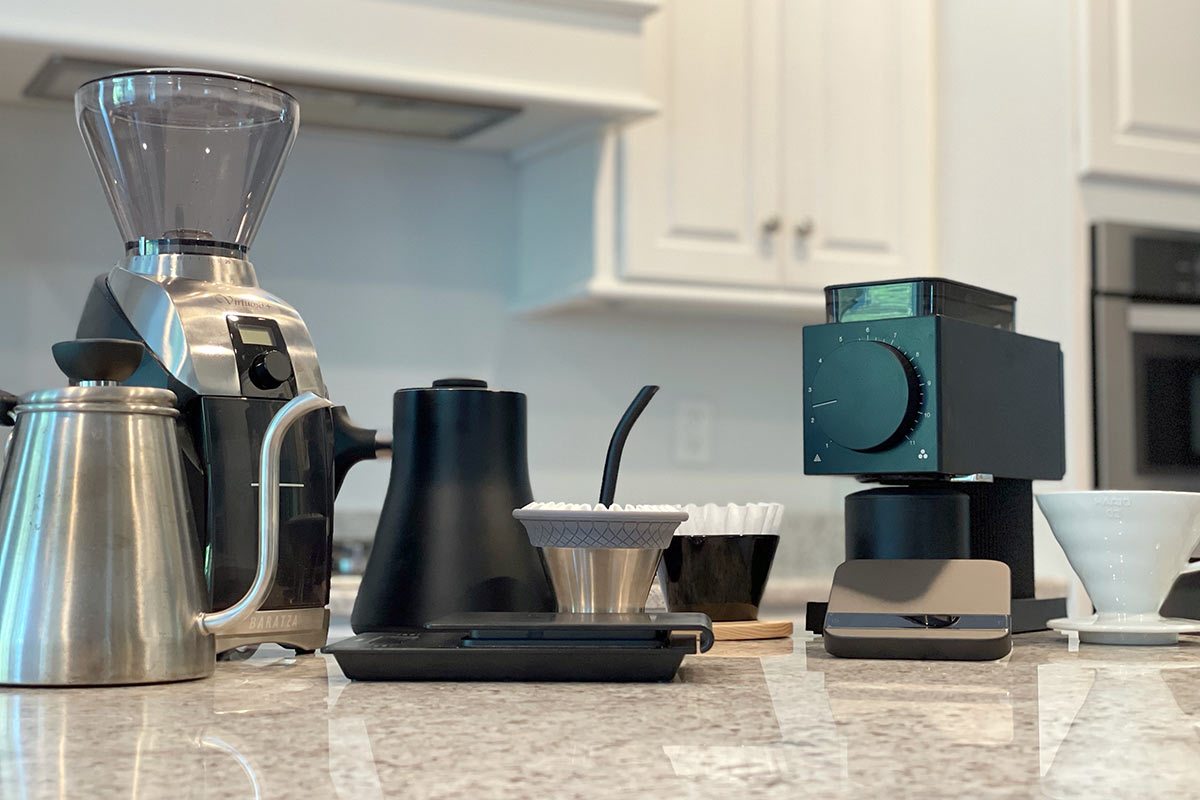
Credit: pullandpourcoffee.com
Frequently Asked Questions Of How To Make Coffee In A Kettle
Can I Make Coffee In A Kettle?
Yes, making coffee in a kettle is a simple and convenient method. By using coarse ground coffee and hot water, you can easily brew a delicious cup of coffee right in your kettle.
Is It Safe To Boil Water In A Kettle For Coffee?
Boiling water in a kettle is safe and an efficient way to prepare hot water for coffee. The high temperature of boiling water ensures that it is free from harmful microorganisms, making it safe for brewing coffee.
What Type Of Kettle Is Best For Making Coffee?
A gooseneck kettle is ideal for making coffee due to its precise pouring ability, which allows for better control over the water flow and extraction process. This results in a richer and well-balanced coffee flavor.
Conclusion
Making coffee in a kettle can be a simple and convenient way to enjoy your favorite brew. With the right tools and techniques, you can achieve a delicious cup of coffee without the need for expensive equipment. By following the steps outlined in this blog post, you can elevate your coffee game and savor every sip.
So, grab your kettle, some quality coffee grounds, and give it a try!
